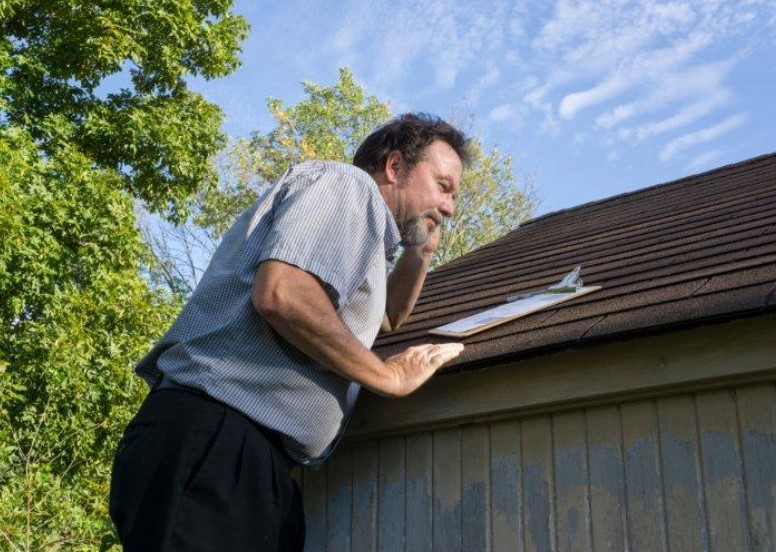Any responsible property owner would take every precaution to safeguard their home. Preventative maintenance is important in keeping your home secure throughout the year. It is important to take adequate care of your roof, thereby preserving the safety of your house.

Roof Leaks and Mold
Mold can develop in your home directly from a roof leak or a secondary effect of the leak’s water intrusion. Condensation from a roof leak is an attic’s primary source of mold growth. Puddles or excessive water from the roof might cause the fungi to release spores and spread throughout your property. Mold is a problem homeowners should take seriously. Not only can it harm your house, but it can also create severe health hazards if left unchecked. What’s more, the spores can spread exceedingly fast. They can start in a little section of your basement and wind up in other rooms in only a few days.
This information is presented by our team, who completes roof leak repair in Providence, RI.
What Are The Major Causes of Roof Leaks?
Mold and water damage cost a lot to fix, but first, you have to know what causes the leaks in the first place to mitigate future occurrence. So, what causes these leaks?
Too Much Time Spent on The Roof
It is better to avoid spending excess time on your roof, as it might be difficult to determine whether or not your presence caused a leak. Simply put, a roof is not as sturdy as it seems; putting weight in the wrong spot might easily cause the materials to crack and break. It is therefore advisable to contact a skilled professional who can do it safely if you think you need to go up on your roof.
Shattered Roof Tiles
The shingles on your roof are the first line of defense against the outside elements. However, leaks might develop in your roof if you experience prolonged periods of heavy rain and storms. During your next roof inspection, look for any damaged shingles. If you want to increase the security of your home, you should replace the worn spots.
Damaged or Improperly Installed Flashing
Rainwater and moisture will easily enter the house if the metal put around the chimney, dormer windows, skylights, or vent pipes cracks or breaks.
Clogging of Gutters
Rainwater pools in one spot on the roof due to clogged gutters can prevent it from draining away. Then it has a good chance of breaking in.
Use of Unsuitable Roofing Materials
Not all roofing materials are created equal. It’s easy for leaks to form if your roof isn’t built with sufficient and properly fitting materials.
Signs to Look Out for in a Leaking Roof
A large pool of water on the ceiling may be the first indication of a roof leak. Sometimes, though, locating the source of a leak might be a challenge. Here are a few warning indicators:
Water Drips
Dripping sounds or watermarks on the ceiling or walls are usually not a good sign. Most often, the dripping comes from a roof leak on your property. If you discover water dripping from your roof, you may want to have a roof leak repair expert in Providence, RI look at your building and try to pinpoint the leak’s origin.
Mark Caused by Water
If you glance up at your ceiling and see a water pool with a faint brown tinge, you’re looking at a roof leak. Some tiny leaks may be tough to identify as they can occur in darker sections of your house. If there’s any hint of discoloration on your ceiling, it’s advisable to inspect it extensively for a leak or mold.
The Development of Living Matter Outside The Building
While moss growing on the side of your house may lend a sense of rustic charm, it more often than not indicates that your gutters and downspout are not doing their job. It may signify water damage if you notice a large amount of moss on your building.
What Can be Done to Fix Roof Leaks?
After determining whether or not mold has grown on your ceiling due to a roof leak, the next course of action is to take care of the problem. To assess the damage and decide how best to get rid of the mold in your home, follow the steps outlined below:
Evaluate the Extent of Damage
Remember that just because you can see mold growing on your ceiling doesn’t mean that’s where it ends. Water damage can allow mold to grow everywhere in your home, including the drywall, insulation, floors, and ceiling beams. Checking for mold requires a comprehensive examination of the area around the suspected source, you can do this by hiring a roof leak repair to do a thorough cross-examination. Remember that you should also look for mold growth in your attic.
Roof Leak Remediation
When dealing with roof leaks, it is advisable that you use professional mold treatment. The skilled professionals will perform a comprehensive mold inspection of your property, evaluate the extent of the mold damage, stop the mold development, get rid of the spores, deodorize the area, and clean up and restore the affected area.
Contact a Professional Roof Leak Repair
Due to the severity of the problem and the difficulty and inconvenience of mold removal, it is strongly advisable that you seek the assistance of roof leak repair in the event of a suspected ceiling mold infestation. Why? Because it is possible that the mold problem isn’t as localized as it appears to be to the untrained eye. Expert mold remediation services will clear your home of mold, repair any affected sheetrock, and guarantee that the problem won’t return.
Verdict
Home Advisor estimates that the national average roof repair cost is $1,020, with most homeowners spending between $378 and $1,699.
To minimize the damage caused by water to your property and avoid the accompanying headache and issues, you need to fix a roof leak as soon as it arises. If the damage has already built up by the time you detect the problem, ensure you engage a roof leak repair expert to safely and effectively handle the restoration procedure.
